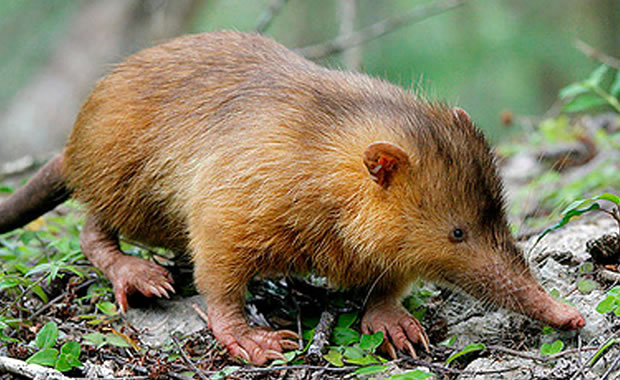Creature Profile
The Roque Chico de Salmor giant lizard is a subspecies of El Hierro giant lizard and is believed to be extinct. It was once present throughout much of the El Hierro island in the Canary Islands of Spain and on the small offshore Roque Chico de Salmor. Hierro giant lizards are thick lizards and reach about two feet long, and their heads are broad. Adults are dark gray to brown in color with pale orange patches running along the sides. Their undersides are mostly brown but have orange to red colorations towards the middle. As they grow old they turn black in color with some shades of gray. Males grow larger than females.
Hierro giant lizards are terrestrial lizards and seem to prefer rocky habitats preferably in small and young volcanic areas. They are omnivorous and feed on two main plant species, Kleinia neriifolia and Lavandula abrotanoides. They also feed on insects. To impress females, males bob their heads with their throats inflated. Mating occurs in May, and the female gives birth to 5 to 13 eggs between June and August. The eggs are incubated until they hatch 61 days later.
The Roque Chico de Salmor giant lizard subspecies was wiped out from the Roque Chico de Salmor in the 1930s due to overcollection of specimens for scientific study and for its commercial value. A recovery plan has been developed along with a captive breeding program by the Canary Islands Autonomous Government for all remaining Hierro giant lizard subspecies, and they are also legally protected both nationally and internationally.
Wikipedia Article

|
Wikipedia Article Copyright Notice: This article is licensed under the GNU Free Documentation License. It uses material from the Wikipedia article "El Hierro giant lizard". |
April 30, 2017
Glenn, C. R. 2006. "Earth's Endangered Creatures - Roque Chico de Salmor Giant Lizard Facts" (Online). Accessed 4/18/2024 at http://earthsendangered.com/profile.asp?sp=240&ID=6.
Need more Roque Chico de Salmor Giant Lizard facts?



